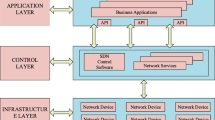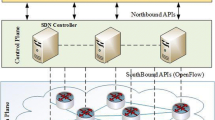Abstract
One of the most widely used buzzwords in mobile communications of the recent years is Space Division Multiple Access (SDMA). The introduction of an additional space domain multiple access component is likely to boost system capacity, due to the spatial reuse of physical channels within one cell. While early approaches of SDMA system modelling show capacity to be gained in the order of 300 to 400%, there remains some more in depth system analysis to be done, as inhomogeneities in the user distribution are expected to likely cause dramatic drops in the additional capacity gained by SDMA. The spatial distribution of terminals directly influences the number of channels to be gained by spatial multiplexing. Therefore, it is not until detailed models for user distribution, user mobility and the traffic load generated by users are combined with a model of the SDMA radio subsystem, that realistic approximations for these capacity gains are possible. In this paper, we discuss the issues in modelling and simulation of SDMA systems. We present an approach for integrated SDMA system modelling, discuss analytic teletraffic dimensioning methods for macro- and microcellular environments and their relevance to SDMA systems, and present some early simulation results.
Similar content being viewed by others
References
J. Eberspächer and H.-J. Vögel, GSM-Global System for Mobile Communication. Vermittlung, Dienste und Protokolle in digitalen Mobilfunknetzen, Teubner: Stuttgart, 1997.
P. Kühn, Tables on Delay Systems, University of Stuttgart, ISBN 3-922403-05-0, 1976.
L. Kleinrock, Queueing Systems-Vol. 1: Theory, J.Wiley & Sons Inc.: New York, London, Sydney, Toronto, 1975.
R. Rheinschmitt, M. Tangemann and B.X. Weis, "A-SDMA: Ein neues Multiplexverfahren für Mobilfunksysteme", in Proc. ITG-Fachtagung Mobile Kommunikation, 27-29 September 1993 in Neu-Ulm, Offenbach: VDE-Verlag, Berlin, 1993, pp. 291-306.
Notker Gerlich and Michael Tangemann, "Towards a Channel Allocation Scheme for SDMA-Based Mobile Communication Systems", in Proc. ITG-Fachtagung Mobile Kommunikation, 26-28 September 1995 in Neu-Ulm, Offenbach: VDE-Verlag, Berlin, 1995, pp. 109-116.
N. Gerlich, "On the Spatial Multiplexing Gain of SDMA for Wireless Local Loop Access", In Proc. 2. EPMCC '97, Bonn, 30 Sept.-2 Okt., 1997, pp. 299-335.
V. Palestini and A. Rolando, "Multibeam Antennas for a PCS System Based on GSM/DCS 1800 Technology: An Approach to Space Division Multiple Access (SDMA)", in Proc. ICPMSC'96, 2nd International Conference on Personal, Mobile and Spread Spectrum Communication, Hong Kong, 3-5 Dec. 1996, pp. 72-75.
J.J. Blanz, P.W. Baier and P. Jung, "A Flexibly Configurable Channel Model for Mobile Radio Systems with Directional Diversity", in Proc. ITG-Fachtagung Mobile Kommunikation, 26-28 September 1995 in Neu-Ulm, Offenbach: VDE-Verlag, Berlin, 1995, pp. 93-100.
M. Haardt, and J.A. Nossek, "Unitary ESPRIT: How to Obtain Increased Estimation Accuracy with a Reduced Computational Burden", IEEE Trans. Signal Processing, Vol. 43, 1995.
M. Haardt, M.D. Zoltowski, C.P. Mathews and J.A. Nossek, "2D Unitary ESPRIT for efficient 2D Parameter Estimation", in Proc. IEEE Int. Conf. Acoust., Speech, Signal Processing, Detroit, MI, May 1995, Vol. 3, pp. 2096-2099.
J.G. Markoulidakis, G.L. Lyberpoulos, D.F. Tsirkas, and E.D. Sykas, "Mobility Modeling in Third-Generation Mobile Telecommunications Systems", IEEE Personal Communications, pp. 41-56, 1997.
M. Frullone, P. Grazioso and A.M. Serra, "Performance Evaluation of a Personal Communication System in an Urban Environment", Proc. 12th IEEE VTC, Denver, CO, May 1992.
H.D. Robertson, J.E. Hummer and D.C. Nelson, "Manual of Transportation Engineering Studies", Institute of Transportation Engineers, Prentice Hall, NJ, 1994.
R.A. Guerin, "Channel Occupancy Time Distribution in a Cellular Radio System", IEEE Trans. Veh. Technol., Vol. VT-35, pp. 89-99, 1987.
S. Tekinay, "Modeling and Analysis of Cellular Networks with Highly Mobile Heterogeneous Traffic Soruces", Ph.D. Dissertation, George Mason Univ., Fairfax, VA, 1994.
M. Frodigh, "Performance Bounds for Power Control Supported DCA-Algorithms in Highway Micro Cellular Radio Systems", IEEE Trans. Veh. Technol., Vol. 44, pp. 238-243, 1995.
Author information
Authors and Affiliations
Rights and permissions
About this article
Cite this article
Hartmann, C., Vögel, Hj. Teletraffic Analysis of SDMA-Systems with Inhomogeneous MS Location Distribution and Mobility. Wireless Personal Communications 11, 45–62 (1999). https://doi.org/10.1023/A:1018657911851
Issue Date:
DOI: https://doi.org/10.1023/A:1018657911851




